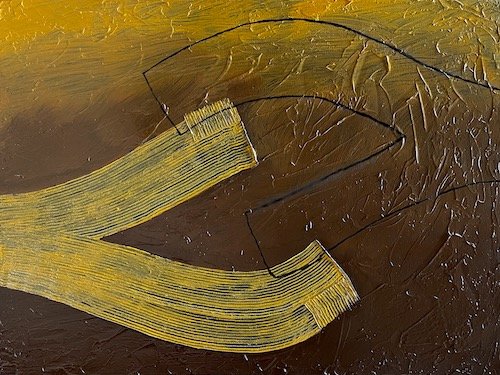I've spent the past two weeks finishing a piece (What Could Be – which I originally wanted to title Infinity Awaits) that did not want to end, reading Bianca Bosker's Get the Picture, and reading a set of essays (titled Ways of Seeing) based on a 1972 BBC series of the same name.
I devoured Bosker's book, though in retrospect I found the first section (about her toxic relationship with a deeply flawed gallerist) painful and useless. The last quarter or so was uplifting, reminding me of the ways my eyes and mind were opened when I started painting. I'm glad I read that before our upcoming travels -- reminding me to be as open as possible.
Ways of Seeing (edited by John Berger) takes the format of seven essays - three of which contain only photos. The first essay essentially interprets Walter Benjamin's "The Work of Art in the Age of Mechanical Reproduction." The other verbal essays are critical screeds on capitalism and sexism in Euro-American beaux arts. I had to keep reminding myself of the date of the essays: to me they repeated the critical theory that I read throughout my time as an academic, but actually they were early applications of theory to art.



